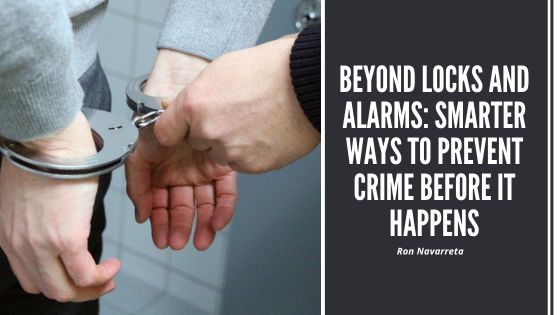Introduction
When we think of crime prevention, the first things that come to mind are deadbolt locks, home alarms, or maybe even security cameras blinking red in the night. While these tools play their part, true crime prevention runs deeper. It’s not just about reacting to criminals—it’s about creating environments where crime is less likely to happen in the first place. The smartest crime prevention strategies are proactive, community-driven, and designed to cut off opportunity before it strikes.
- The Power of “Natural Surveillance”
Criminals don’t want an audience. That’s why well-lit streets, trimmed hedges, and open sightlines around homes and public areas are incredibly effective deterrents. This concept—known as natural surveillance—encourages residents and even passersby to keep informal watch. A neighborhood where people can see and be seen is a neighborhood where crime struggles to thrive. - Community Connection Is the Real Security System
It’s easy to underestimate the role of community in crime prevention. A strong, connected neighborhood where people know each other’s names, faces, and routines naturally discourages criminal behavior. Why? Because community members are more likely to spot unusual activity and speak up. Neighborhood watch groups, local social media pages, or even monthly block gatherings all help build that invisible but powerful network of safety. - Environmental Design: Shaping Safer Spaces
The design of physical spaces influences how crime unfolds. This is the foundation of Crime Prevention Through Environmental Design (CPTED). Features like controlled access points, visible pathways, sturdy fences, and even benches placed in high-visibility areas can make potential offenders feel exposed and less likely to act. In other words, smart design = safer communities. - Technology as a Tool, Not a Crutch
Yes, alarms, smart locks, and security cameras are excellent tools—but they aren’t magic bullets. Technology works best when combined with human action. For instance, a security camera paired with motion-activated lights not only records an event but also startles a would-be intruder, forcing them to rethink. Similarly, smartphone alerts allow residents to act quickly instead of discovering an issue hours later. - Youth Engagement: Stopping Crime at the Roots
Prevention isn’t just about stopping crime in the moment—it’s also about reducing the chances it develops in the future. Programs that give young people mentorship, job opportunities, and safe recreational outlets are among the most powerful long-term crime prevention strategies. When kids and teens have alternatives to crime and feel supported by their community, the cycle of criminal behavior is interrupted before it starts.
Conclusion
Crime prevention isn’t just about locks, alarms, or waiting for the police to show up. It’s about designing safer environments, building stronger communities, and addressing root causes before they spiral into crime. Every light installed, every conversation shared with a neighbor, and every youth program supported is a piece of the puzzle. The truth is, crime prevention works best not as a solo effort but as a collective one—where people, design, and technology combine to create a culture of safety.

